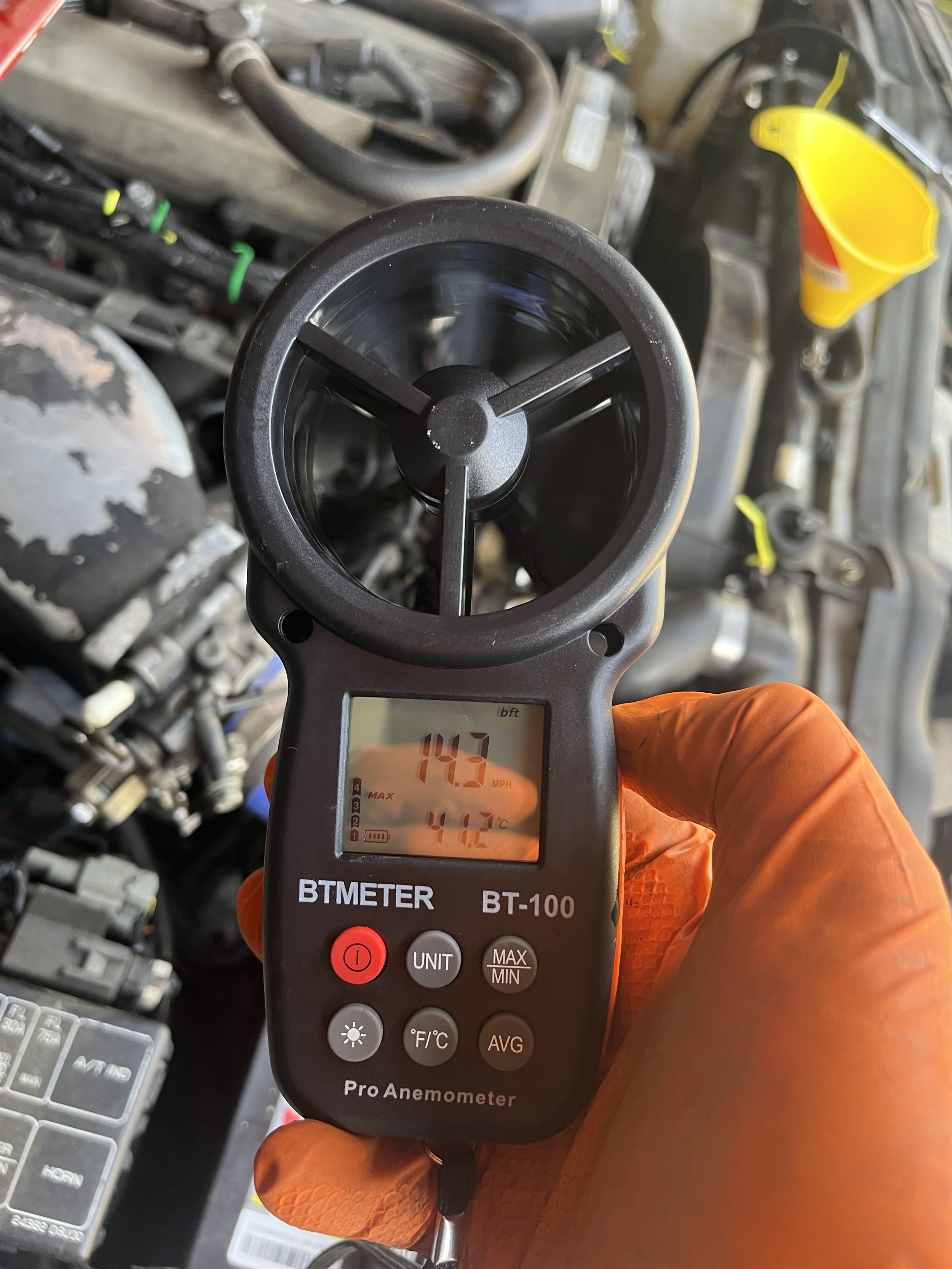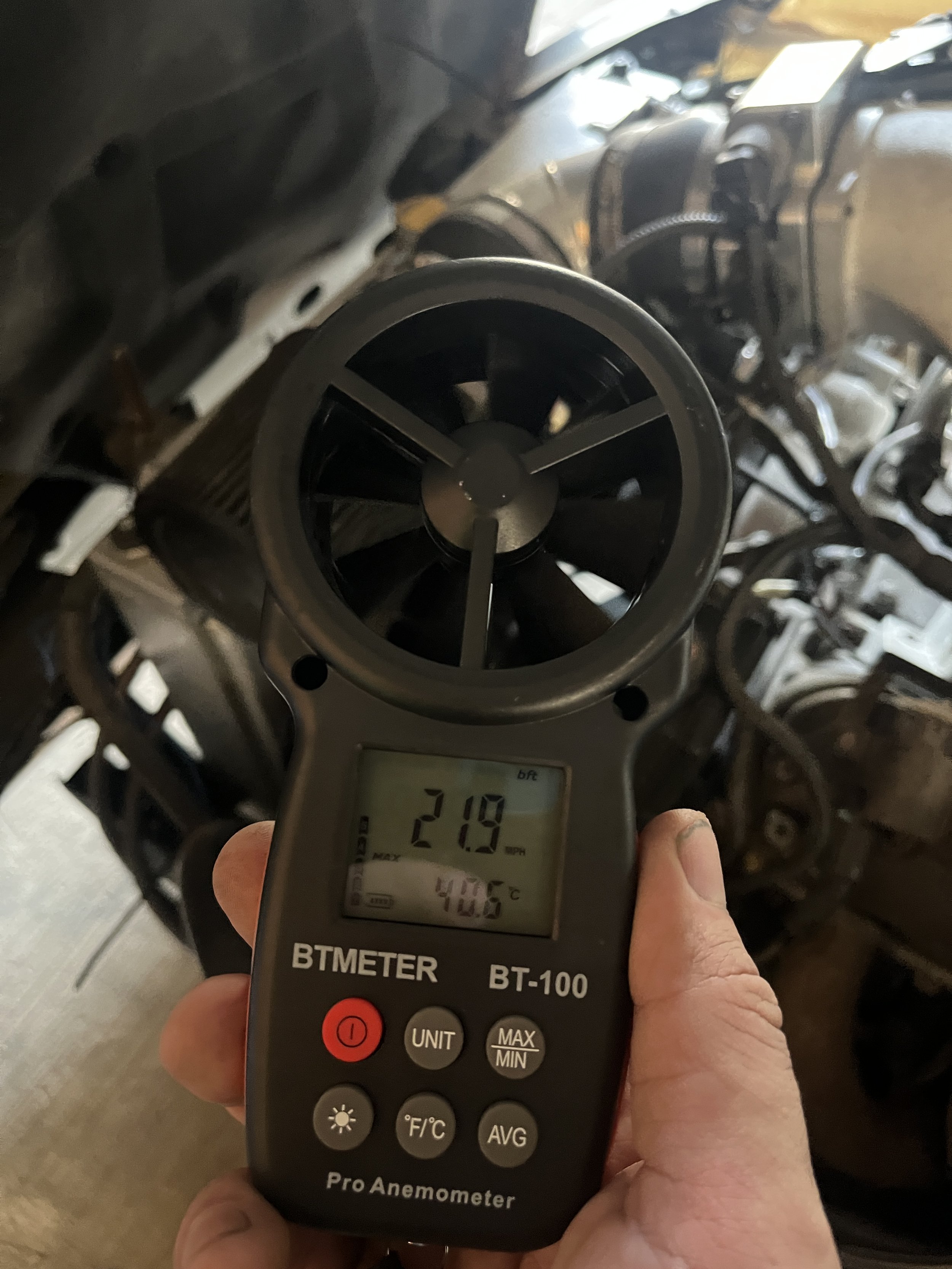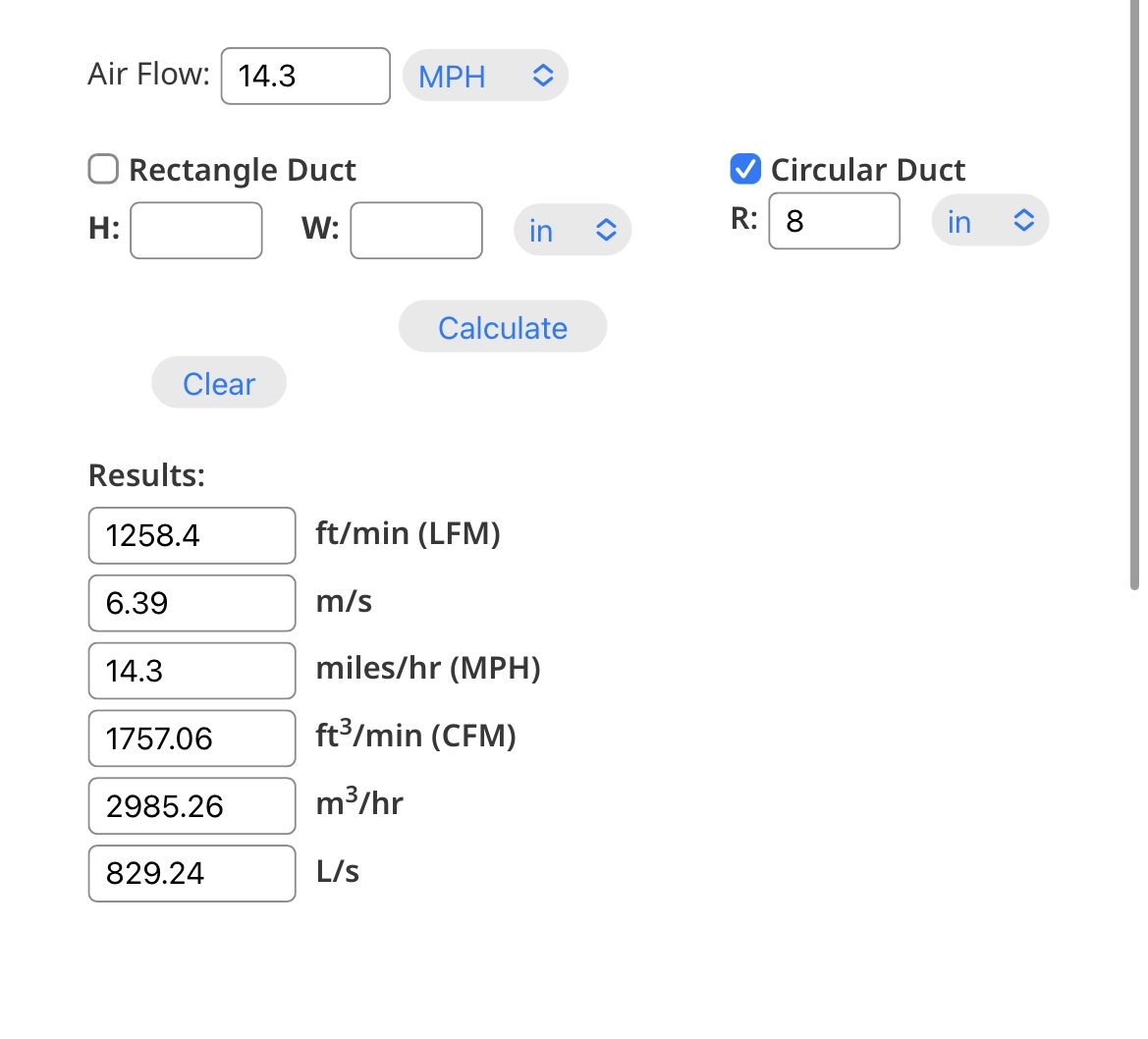The RB26 RB20 and RB25 viscous clutch fan is junk and you should upgrade to a modern e fan setup
RB Motoring
The clutch fan in the RB engine flows very little air, and you should upgrade to a modern electric fan setup to keep your engine cool.
There is an old wives tale on the internet that viscous clutch fans flow 10,000 CFM, and that they are better than electric fans. If anyone reading this has upgraded to good e-fans on your RB, you are probably laughing because it’s painfully obvious how bad the clutch fan is by just sticking your hand behind your new fans after swapping it out. But, people still argue this is the case, so I grabbed my anemometer and tested the airflow.
To cut to the chase, our test subjects and results were:
Stock RB fan clutch + GK Tech Fan: 1757 CFM
Mishimoto Fan Kit: 1790 CFM
Spal 30103202: 3284 CFM
So to recap before we get to the photos and testing method: the stock fan clutch, with the upgraded GK Tech fan flows LESS than an off the shelf e-fan kit from a low end manufacturer. The GK Tech fan allegedly flows 40% more air, but I don’t see any record of CFM testing from them. They do have extensive video testing of temperature drop in a car from one fan to another, so their fan IS better than stock, but CFM wise we don’t know how much. Even if we assume it’s just 10%, the stock fan would be at 1600CFM. That’s less CFM than ONE of the Spal fans tested.
The obvious caveat here is the shrouding, which makes a huge difference. The OEM fan was made with the OEM shroud in mind and is adequate for most cars. The more obstruction and heat you add to your engine bay, the less likely the OEM fan is to keep up. While the Mishimoto fans flow more air than the stock fan, the shroud is absolute trash for air movement beyond idle and slow speeds. Ideally, you can run enough e-fan for adequate cooling and get rid of the shroud to allow air to exit the engine bay better than the OEM shroud could.
Testing Method
CFM testing isn’t rocket science. There is a formula that uses the area of the fan and the wind speed to determine the effective amount of air being pulled over a surface.
https://www.engineering.com/calculators/air-flow-conversion-calculator/
So, we have our fan sizes:
GK Tech Fan: 16”
Mishimoto: 11.5”
Spal: 12.5”
And we have our wind speed measurements:
GK Tech fan: 14.3 MPH
Mishimoto: 14.1 MPH
Spal: 21.9 MPH ***
There are two footnotes below on how windspeed measurements were taken and why certain settings were used, as well as a note about the Spal fan measurements.
At this point it’s pretty much case closed, given that the Spal fan moves 50% faster than the clutch fan that is 25% bigger than it - and there’s two of them - but we’ll continue with the CFM conversions anyway.
GK Tech: 1757 CFM
Mishimoto Fan: 895 CFM (each, total 1790)
Spal: 1642 CFM (each, 3284 total)
As stated above, the Spal e-fans flow nearly twice the air as the clutch fan, and the Mishimoto fans outperform the clutch fan as well. Keep in mind, this is with the upgraded GK Tech Fan, so the stock fan performs even worse than this. The clutch on this car tested as also brand new, as the previous owner was chasing overheating issues that ended up being a head gasket (after he replaced the radiator, clutch, fan, and shroud).
It is no mystery why virtually every automobile manufacturer has switched the e-fans: they perform better, give you more space in the engine bay, and are less load on the engine meaning more horsepower. If you are having issues with cooling at idle, upgrade to a modern cooling system.
Images and Footnotes
RB Clutch Fan
Mishimoto Fans
Spal Fan
RB Clutch Fan
Mishimoto Electric Fan
Spal Fan
FOOTNOTE 1: For wind speed measurement I used the MAX setting on the anemometer as my number to test with, as it is the most reliable and consistent method. The average has too many variables, as I can’t fully get my hands in the engine bay with the clutch fan, and so the averaged reading may be off due to me maneuvering it around the belts. I could bench test the e-fans, but there are still human variables such as me not sweeping the anemometer over the fan at the same pace that could lead to bad average results.
*** FOOTNOTE 2: The car with the Spal e-fans tested was idling rough and at low RPM due to having 6 month old e85 in the tank. Spal claims they are 1800 CFM. Even in these conditions, they still outperformed the clutch fan.
FOOTNOTE 3: People may point out that the clutch fan will increase in speed with RPM, so an idle test isn’t fair to it. It is true that the clutch fan will spin faster at higher RPM, but idle is the only time your fans matter. Once you hit 25MPH the CFM of the ambient air hitting your radiator is in the neighborhood of 6000 or more. At that point the clutch fan will never be able to keep up. If you’re overheating at cruising speeds, you have much bigger issues than fans.





